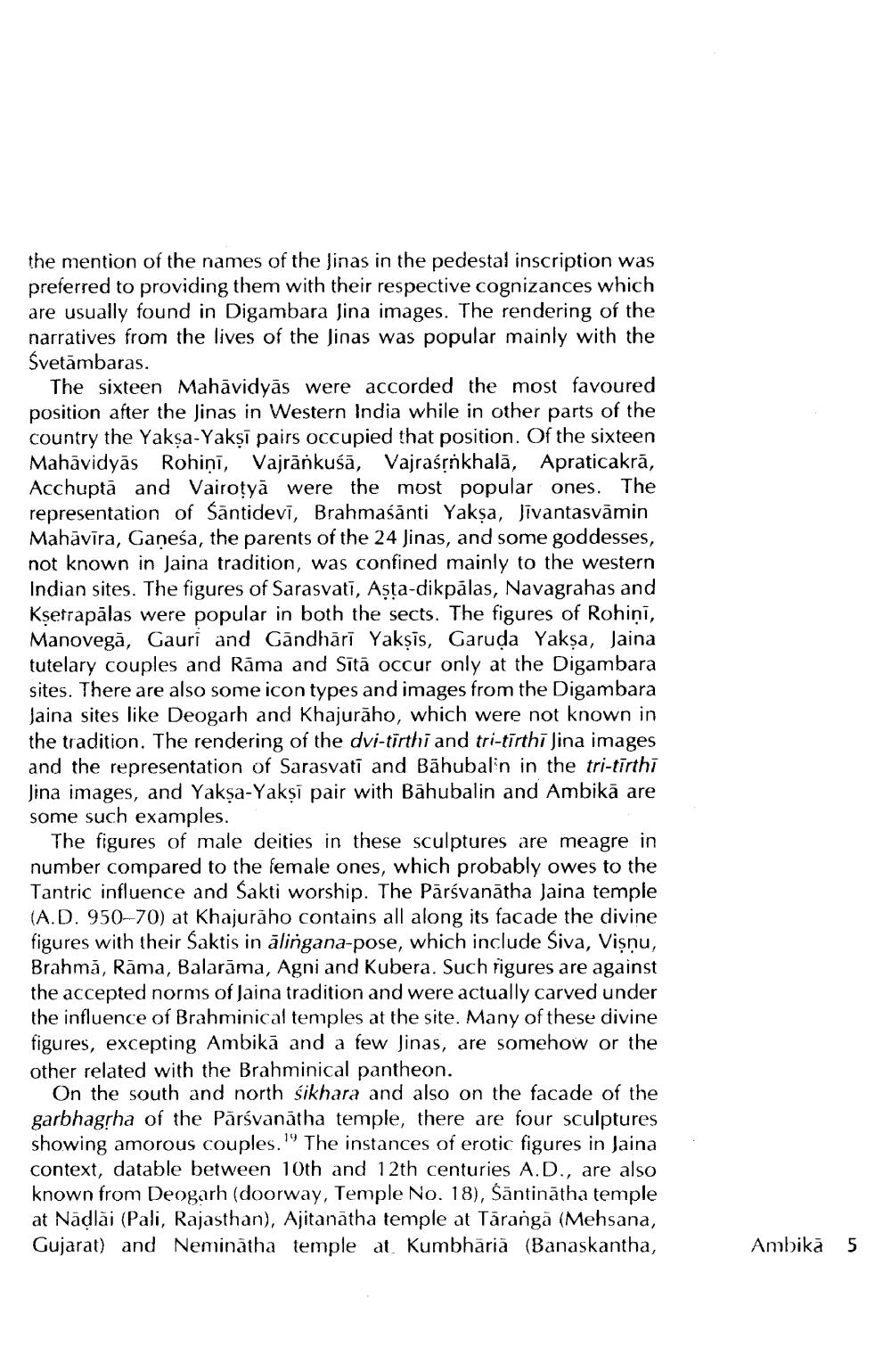________________
the mention of the names of the Jinas in the pedestal inscription was preferred to providing them with their respective cognizances which are usually found in Digambara Jina images. The rendering of the narratives from the lives of the linas was popular mainly with the Svetāmbaras.
The sixteen Mahāvidyās were accorded the most favoured position after the Jinas in Western India while in other parts of the country the Yaksa-Yaksi pairs occupied that position. Of the sixteen Mahāvidyās Rohini, Vajrānkuśā, Vajraírnkhalā, Apraticakrā, Acchuptā and Vairogyä were the most popular ones. The representation of Santidevi, Brahmaśānti Yaksa, Jivantasvāmin Mahāvīra, Ganesa, the parents of the 24 Jinas, and some goddesses, not known in Jaina tradition, was confined mainly to the western Indian sites. The figures of Sarasvati, Asta-dikpalas, Navagrahas and Ksetrapālas were popular in both the sects. The figures of Rohini, Manovegā, Gauri and Gāndhāri Yaksis, Garuda Yaksa, Jaina tutelary couples and Rāma and Sitā occur only at the Digambara sites. There are also some icon types and images from the Digambara Jaina sites like Deogarh and Khajurāho, which were not known in the tradition. The rendering of the dvi-tirthi and tri-tirthi Jina images and the representation of Sarasvati and Bahubalin in the tri-tirthi Jina images, and Yaksa-Yaksi pair with Bahubalin and Ambikā are some such examples.
The figures of male deities in these sculptures are meagre in number compared to the female ones, which probably owes to the Tantric influence and Sakti worship. The Pārsvanātha Jaina temple (A.D. 950-70) at Khajuraho contains all along its facade the divine figures with their Saktis in alingana-pose, which include Siva, Visnu, Brahma, Rāma, Balarama, Agni and Kubera. Such figures are against the accepted norms of Jaina tradition and were actually carved under the influence of Brahminical temples at the site. Many of these divine figures, excepting Ambikā and a few Jinas, are somehow or the other related with the Brahminical pantheon.
On the south and north śikhara and also on the facade of the garbhagrha of the Pārsvanātha temple, there are four sculptures showing amorous couples."' The instances of erotic figures in Jaina context, datable between 10th and 12th centuries A.D., are also known from Deogarh (doorway, Temple No. 18), Śäntinātha temple at Nädlãi (Pali, Rajasthan), Ajitanātha temple at Tārangā (Mehsana, Gujarat) and Neminātha temple at Kumbharia (Banaskantha,
Ambika 5




